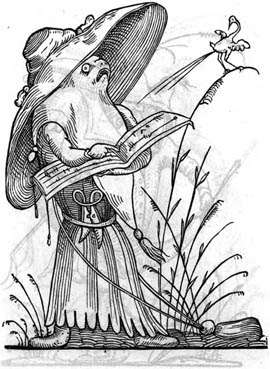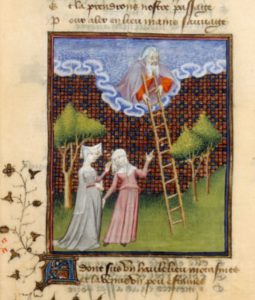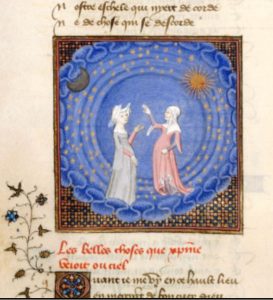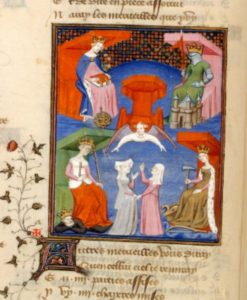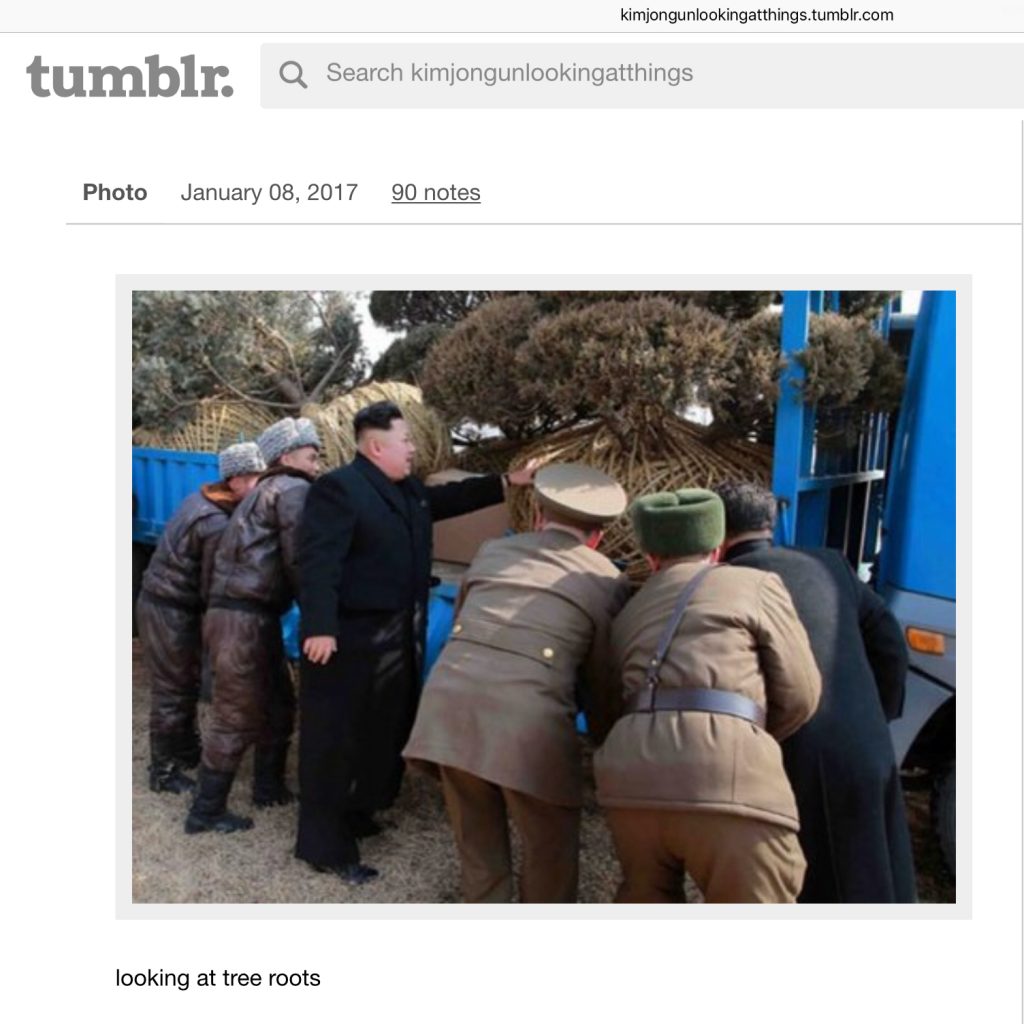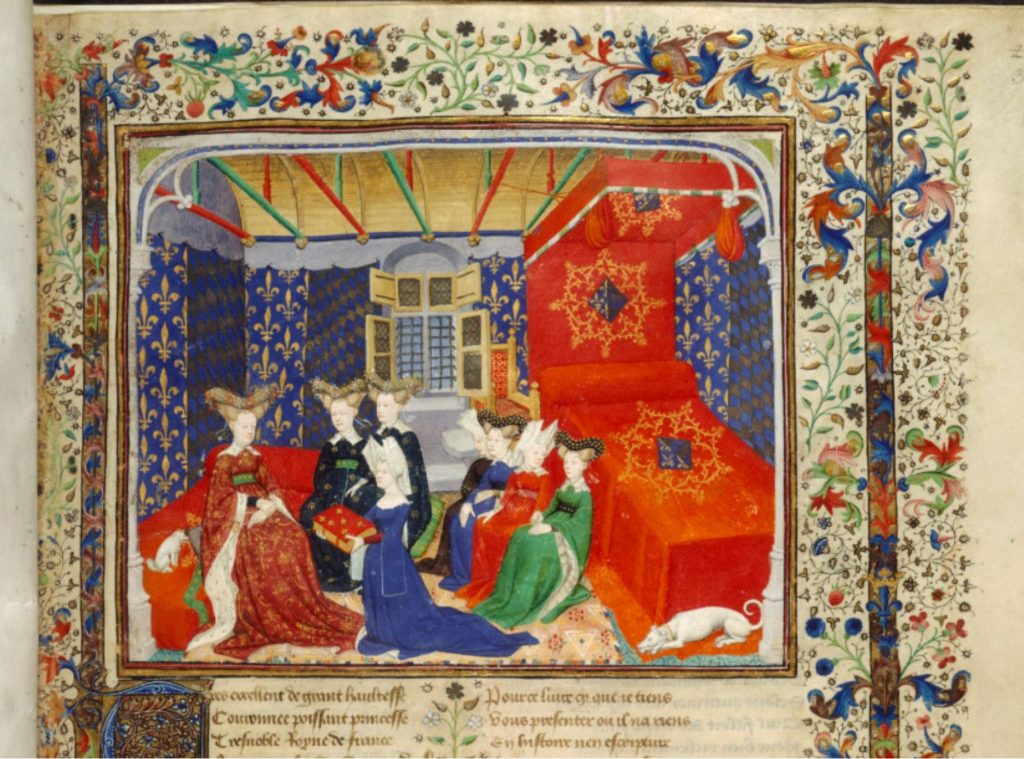Category Archives: Uncategorized
Protected: Comment: up to week 3
Week 13
TUESDAY
Apocalypse(s), The End, and after
Link: Signs of the end, Bodleisn Douce ms 134, via Damien Kempf: https://mobile.twitter.com/DamienKempf/status/785148725219983360
The Harrowing of Hell
Hellmouths
15 signs, 7 seals
Apocalypse within universal history, chronology, chronicles; a (hi)story of unified (hi)stories. Including “regular everyday” natural and man-made disasters.
THURSDAY
Poster presentations!
Week 12
Epilogues and other conclusions: all four texts and anything else you wish to bring to the table
Tuesday: week 11 comments, medical marvels, bestiaries
Thursday: fairies and witches
(Proposal for class next Tuesday: apocalypse and the end of the world, as fitting closure for a class that started with creation and the beginning of the world)
Week 11
Tuesday student presentations:
Cara (fairies)
Jimmy (armour)
Lena (true storytelling and/as magic)
Overarching themes, by happenstance and good fortune: hunting, combat, and defence against the dark arts
Thursday student presentations: Kelsa + Sebastiane + Daphne + Kirsten
Week 10
The weird, and more Rabelais
TUESDAY
- discussion of blog questions from the last two weeks, on and around Rabelais and Bosch; feat. giants
THURSDAY
- student presentations: Ian (Voynich), Coco (werewolves, from Bisclavret to Twilight)
- some more Rabelais (outside the “main” canonical texts, offshoots, margins, drolleries, doodles): the Songes drôlatiques / Drolatic Dreams: see Public Domain Review; Poemas del río Wang, “The unbearable mask”; and Bibliothèque nationale de France, département Réserve des livres rares, RES-Y2-2173
- dreams, visions, phantasies, imaginings
- what to do with them next? the broader ideas of interpreting, interpretation, translation; finding / making sense and understanding; the marvellous critical and creative joys of geeking out and/in an Arts / Humanities education as what Chaucer calls “sentence and solaas” (common phrase in many places, ex. the inevitable Boethius too)
- what happens to them next? Rabelais on the border between medieval drollerie and early modern grotesque; the broader ideas behind these terms and what they tell us (deep / rich philology) about perceptions of “the medieval” and “the modern”
Week 9
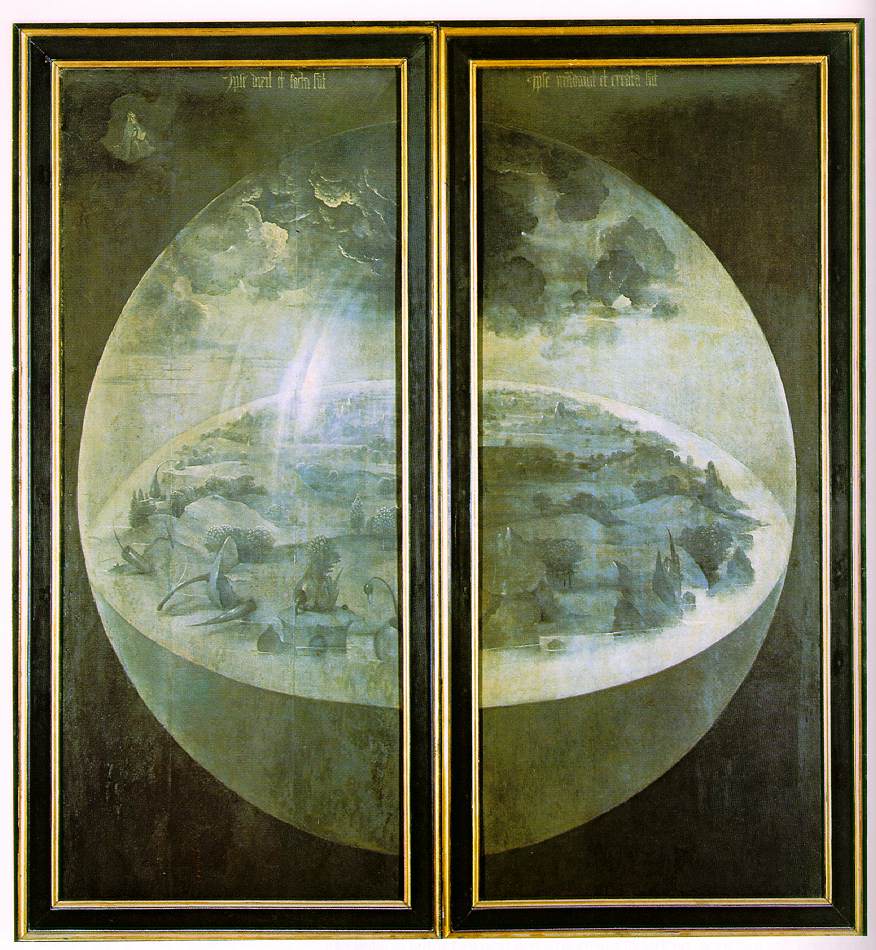
Medievalism, speculative fictions, Rabelais
TUESDAY
- Jeff VanderMeer: the Southern Reach trilogy, Annihilation movie
- “new” worlds and other “other” worlds, under and inside “old” worlds; reading associatively around elements in the Annihilation movie trailer: shimmering veils, lush forests, doorways and other entrances, adventures underground, inscriptions on walls, attacking alien beings and other incomprehensible things, monstrosities, perception of self through awareness that the monstrous other themselves perceive
- the “new weird” and associates: ecotopia, posthumanism, cyberpunk, steampunk, slipstream, Afrofuturism
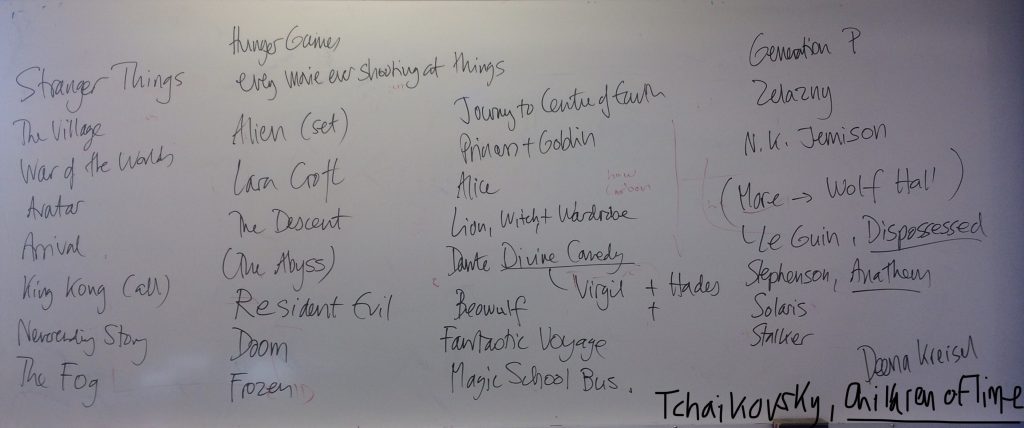

- Gargantua: Thélème
- antecedents: monasteries, courts, gardens, Eden, paradise, libraries, universities, communities; open and closed communities (from anchorites to Béguines and Poor Clares; Christine de Pizan), social experimentation and specifically educational institutions as places of futuristic speculative experiment
- some contemporaries: Thomas More Utopia; its cover and other “other” worlds via the Tower of Babel
- some textual references via week 11 in MDVL301A last year
- Jeff VanderMeer: Wonderbook and creating speculative fiction. Thinking about writing by creative writers about creative writing as another kind of literary criticism and theory (post facto, superficially anachronistic but attempting to find patterns that work generally across common ground) for working with and understanding creative writing of the past through creative reading; which is what we did at the start of class with the “what other films etc does this trailer remind you of?” (at that point in class, no one present had seen the film). Reminding that a purpose of literature, reading, and literary criticism is understanding; not necessarily in one single direction, with one single goal; about finding good questions to ask, not about finding the one right answer; not about finding a solution to a problem, but about the more sophisticated (complicated, living—human or otherwise) idea of resolution. (Analogies often used: round pegs and square holes, nails and hammers.) The two excerpts above are from a 2013 early work in progress post shortly before the book was published (inc. NB medieval elements).
- And an animated short film (we’ll be talking on Thursday about translations across media, and inventing new media, and “translation” broad sense):
THURSDAY
- some more contemporaneity via Hieronymous Bosch
- Reading the “Garden of Earthly Delights,” and reading others’ readings and interpretations and teaching of it, as a useful parallel to reading Rabelais and to thinking about and trying to understand what one does with (and about, and in) utopian communities, education and educational institutions, the life of learning, allegories and allegorisation (IRL and fictions: thinking also about long-running episodic narrative settings, such as TV high school and hospital dramas, the success of Harry Potter in countries where boarding schools have different cultural and social meanings; and thinking about why we read (inc. watch) them)
- Reading the way this painting is accessible, presented, worked with, read (actively / interactively / transactively), and taught; including free open learning online; and translations (broad sense, including rewriting, refashioning, transformation into different media) that continue and keep a work alive (our last example below being an extreme example of bringing a work to life; returning to the start of the course, remembering the creation of life as a first and greatest marvel that is a reference point for all other sorts of marvel and marvellousness)
- Analogy: what could be done next with Rabelais? books and bookishness: manuscript digitisation future visions … and universities, education, learning, life?
- Links:
(1) Wikipedia (static images): closed + open
(2) Three videos, approaches, and ways of interacting with the object: Nicholas Baum, c. 1980; Joseph Leo Koerner, 2009; Pieter van Huystee (trailer for Touched by the Devil), 2016 :
(3) Connected to the last video and the multimedia Bosch events of 2016: interactive Garden of Earthly Delights
The discussion of race here should be supplemented by some further reading and more recent research; for example:
—People of Color in European Art History
—The Public Medievalist Special Series: Race, Racism, and the Middle Ages (40+ articles and a shortlist and poster of key contributions)
—Postmedieval 8: open-access crowd-sourced (partial) bibliography on race and medieval studies
(4) And two last videos, breathing life into a static old two-dimensional object: STUDIO SMACK CGI animation for the State Museum of Breda (Netherlands), 2016 (and more of their work, and an article about this work from designboom); James Spalink, musical arrangement adapted from Amelia Hamrick transcription (on which, and with links to other audio versions see this artnet article), all 2014 (as recirculating online via the Guardian, the Daily Mail (!), and in a nice synthetic post on Open Culture in 2016):
Week 8
(mysterious missing notes ???? to be tidied up)
Main thing this week: student presentations!
- Angela: dragons, Beowulf, Tolkien
- Emma: Tycho Brahe
Week 7
Utopias and other alternate/~ive worlds: Christine de Pizan
TUESDAY
Prologue and frame: your questions and comments from last week…
Space and/of/as women – other worlds – possible future other worlds: utopia
1 autobiography, self-writing, spaces for (and against, and excluding) women: moving to France, the court, reading, learning:
- the trope of humility and ignorance: ex. Othea (1400, start: p. 30-31), Path of Long Study (1402-03, prologue: 60-61)
- Fortune’s Transformation (1404: 91-99)
- Vision (1405) and strange bodily image (173-77), Christine’s complaints (fortune vs misfortune) and a personal path of long reading and learning and writing (192-96); compare her complaints (about her own life and the state of the world) in the Path of Long Study (61-66)
2 places for thought:
- reading, Boethius & his Consolation of Philosophy, sibyl-guides, dream-vision and travels (in this world and its wonders, ex. 75-80, and in other worlds, ex. 80-87), and a marvellous garden and fountain of learning (69-74, where a number of great thinkers hang out; an other world outside of time and space as Aristotle, Avicenna, Homer, Orpheus, and others on p. 73 don’t coincide in real life; for some post-medieval analogues, see H.P. Lovecraft and Thomas Ligotti): the Path of Long Study
- the afterlife: Prison of Human Life (1418)
- flight & refuge / imprisonment in an abbey: Joan (1429: 253 stanza 1)
3 building space, creating a new space for oneself, and what happens next:
- public space: Roman de la Rose debate (1401-2)
- City of Ladies (1405): the end (153-5) … and the start of the Treasure / Three Virtues (1405), continuing and maintaining The Work (156-58)
Images above: Christine de Pizan, The Path of Long Study: British Library Harley MS 4431 f. 188r, 189v, & 192v
4 framing our discussions, the other world that was—by serendipitous fortune—on the board during class:
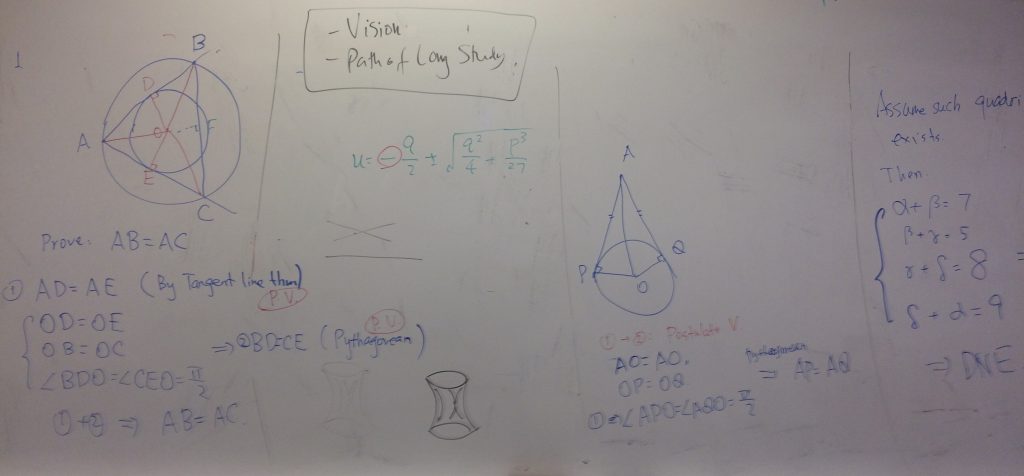
Bonus movie: The Passion of Joan of Arc (dir. Dreyer, 1928); black and white, silent, with intertitles & script based on the original trial transcript—see last week’s comments for a link to it—there are several versions with soundtracks online; here is one set to the music of Arvo Pärt
THURSDAY
Reading:
- Path of Long Study extracts (60-87)
- Vision extracts (173-201)
Images (and the limits of the imaginable): BL Harley 4431 http://www.bl.uk/manuscripts/FullDisplay.aspx?ref=Harley_MS_4431
Possible other worlds: future France
- histories, moral works: allegory, didacticism, virtue, education
- for examples of how allegory works—allegoresis (building it) and exegesis (interpreting it, making sense of it, moving to the aim of understanding)—see Othea (30-41)
- specular works / mirrors of princes / political treatises:
- (1) during her intensive writing period around 1400, with France in decline under Charles VI: Othea (1400), Charles V (1404), Fortune’s Transformation (1404), Three Virtues (1405-06)
- (2) France in crisis: Body Politic (1404-07), Arms (1410), Peace (1412-13)
- (3) after Christine’s 1418 retreat from the world, ending in hope: a new king, Charles VII, and Joan of Arc: Joan (1429)
On commentary, and on the commentary in this class:
1. Textual examples from Christine de Pizan: Othea (30-41).
- Step 1: looking attentively, reading, observing, describing
- Step 2: gloss, explanation, like a first level of footnotes; for example providing further information about a deity, mythological figure, fictional character, place, or other proper noun; may include a second layer (with respect to Step 1 as a first layer) of storytelling
- Step 3: allegory, analysis, interpretation; often (as in the examples here) prescriptive; this is the step at which many paths will be possible, and where the reader / Christine makes choices (aka judgement calls) on which of these paths to follow. Why choose a path and why do this at all: understanding, moral (and political and social) improvement, eventual prescription of a path (or paths) to follow in order to attain individual and collective salvation. Step 3 involves a step up in thinking to a higher level of abstraction, and may involve theorization (be that the application of an existing theory—see Step 4 for an example—or its reworking or the making of a new theory).
- Step 4 (in the Othea cases and some other examples; not an obligatory necessary step in all allegory, explanation, analysis, interpretation, and exegesis; indeed, the appeal to authority is one of the commonest informal fallacies in argumentation…): a “QED” (quod erat demonstrandum, proven, full stop / period) of citing or quoting authoritative judgement / opinion / interpretation. In the examples we saw, the first authority is usually one of the Church Fathers, early writers / commentators on Christianity (the textual corpus and field is called “patristics”): ex. St Jerome. This first authority may be cited or quoted. The second and final authority is Christian holy scripture, quoted directly.
2. Visual example: Christine de Pizan, The Path of Long Study: British Library Harley MS 4431 f. 188r
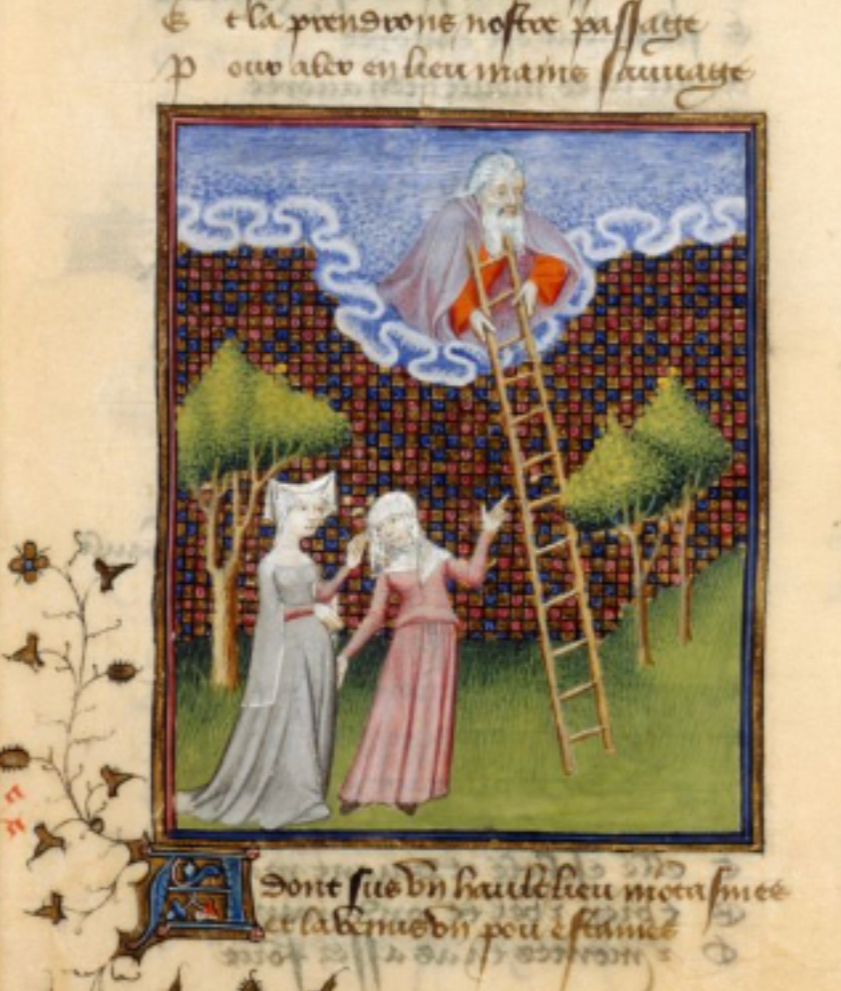
We did several analyses of this one image, bringing in a range of associations: colours and composition and iconography, comparisons with other compositions that were reminiscent, intertextual allusion (ex. Jacob’s ladder), the personal and autobiographical, the imaginatively associative; selecting a point of focus (one or more figures, the background, a colour; or the composisition as a whole); throwing in some modern theoretical approaches, and other anachronisms, and creative (but sensible and intelligent) misreadings; for example using psychological & psychoanalytic interpretations as a contemporary cultural parallel to religion as the Step 4 “QED.”
3. Textual example associated with that visual example: what happens in the Path of Long Study when Christine meets that ladder; and her observation exercises, more dramatically when seeing all the stars and planets afterwards, but also when travelling the earth and when encountering a new person/ification for the first time.
4. A final, non-Medieval, example: Kim Jong-Un Looking At Things…
Week 6
Visions, mysticism, miracles, Christine de Pizan
IDEAS
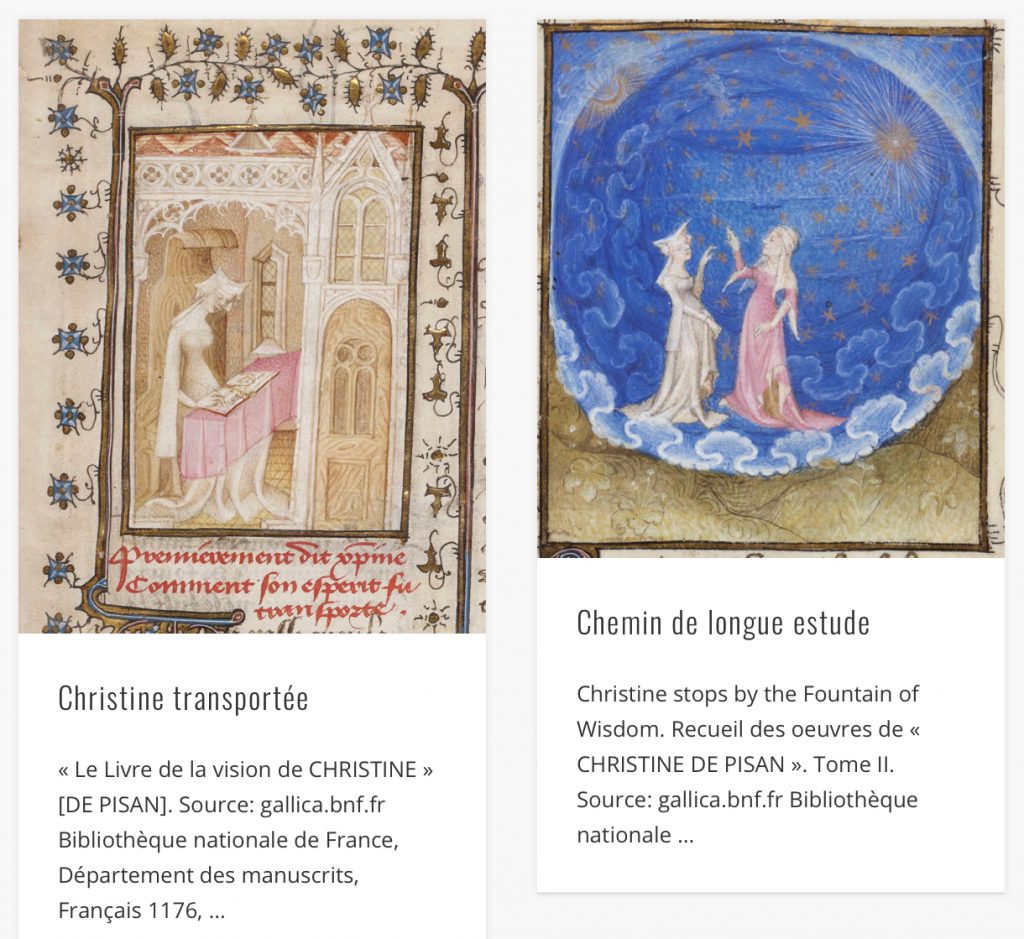
Marvel < Lat. mirari, mirabile, mirabilis > also miracle, mirror
- the moment of wonder – transport, rapture, awe-struck – and visions
- reaction, the transport of transformation, “transformative learning”
- sight as dominant sense referred to, due to immediacy (albeit not the only sense, nor necessarily restricted to it, nor just to one): wonder and marvelling are connected to seeing and vision
- mirrors, speculation, introspection, specularity (and self-knowledge), mirrors for princes, didactic material – modern example: the start of Wilde’s Picture of Dorian Gray
Christine’s visions and marvels:
- Rationale for selecting this edition (rather than just the Book of the City of Ladies)
- personal, internal, spiritual, self-writing
- visions: L’Advision Christine, BNF fr 1176 (the home MS of one of the images at the start of this post)
- contextualised via compilation in a collection of spiritual and contemplative (and disputational) writing: BNF fr 1181
- allegory and imagination (1): criticism, creativity, construction; personifications; the dream-vision of utopia and proto-speculative fiction / SF; building the City of Ladies
- parallels, analogues: Julian of Norwich, Margery Kempe, Marguerite Porete, saints and mystics, Béguines, …
- journeys and travels (internal, abstract, and/or imaginary): the idea of “transformative learning” and allegory (2); self-knowledge, examination, and learning
Image of such a voyage of self-discovery, exploration, and mapping of marvels: British Library Medieval Manuscripts Blog
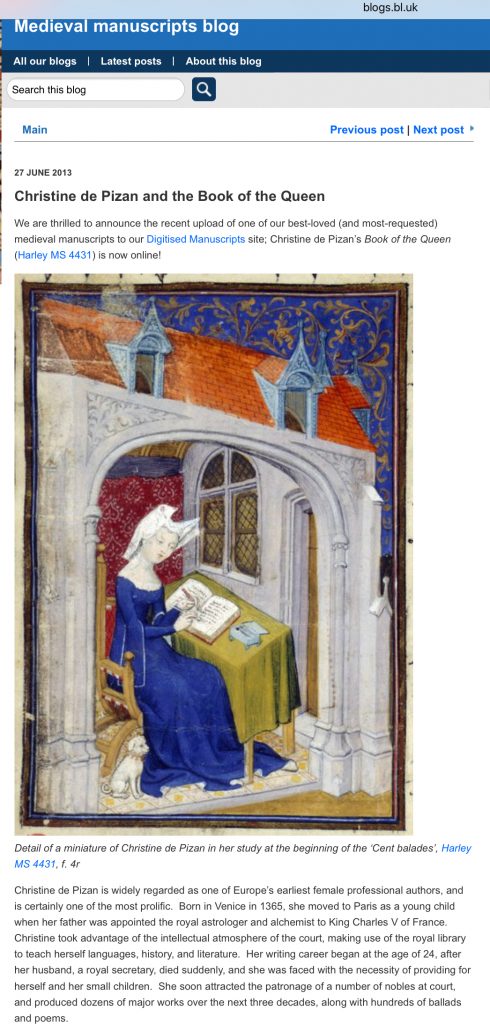
- prisons and imprisonment
- the paradoxical existence of a widow who is a professional writer at court; main “day job” work, historiography, PR / propaganda

(An example of The Regular Day-Job, via the Bodleian Library, Oxford) - Service to patrons includes flattery and other courtliness, but also self-promotion, as an existence dependend on patronage entails instability. See for example the combination of artist/author and patron, in the classic pose that also iconographically recalls (in another, visual, cross-reference and intertextuality): lord and vassal (king/noble, or other relationship, justice), the Virgin Mary or other saint and humble human in prayer, supplicants offering gifts (political, diplomatic, the three wise men, a prospective lover, etc.):
- the paradoxical existence of a widow who is a professional writer at court; main “day job” work, historiography, PR / propaganda
- imprisonment and consolation: Boethius and Jean de Meun
- prisons, pathways, and poetry
visual and metaphorical models:
—the linear, inc. paths, choosing your route and turnings, and forking paths; the related idea of “adventure” in travel < ad + venire, to come to somewhere (where the point and interest is the route taken)
—the complex linear: labyrinths, mazes, Borges
—the circular: a circularity in many forms of lyric poetry, song, and dance that can result in repeated recycling, entrapment, returning to the same point of departure: ex. ballades, rondeaux, and Fortune’s wheel
—alternatives and ways out that include the potential for change: fixed forms with infinite potential for movement and creativity within them:
(1) Dante’s terza rima (14th c.; and Arnaut Daniel’s sestina, 12th c. Occitan; AD appears in Dante’s Purgatory XXVI)
(2) the sonnet (16th c. + 13th c. Occitan/Sicilian/Tuscan/Italian predecessors: Giacomo da Lentini, Guittoni d’Arezzo, Lanfranchi da Pistoia, Guido Cavalcanti; the latter was also a contemporary & friend of Dante and also appears in Purgatory (XI): all roads lead back to and around and about Dante… )
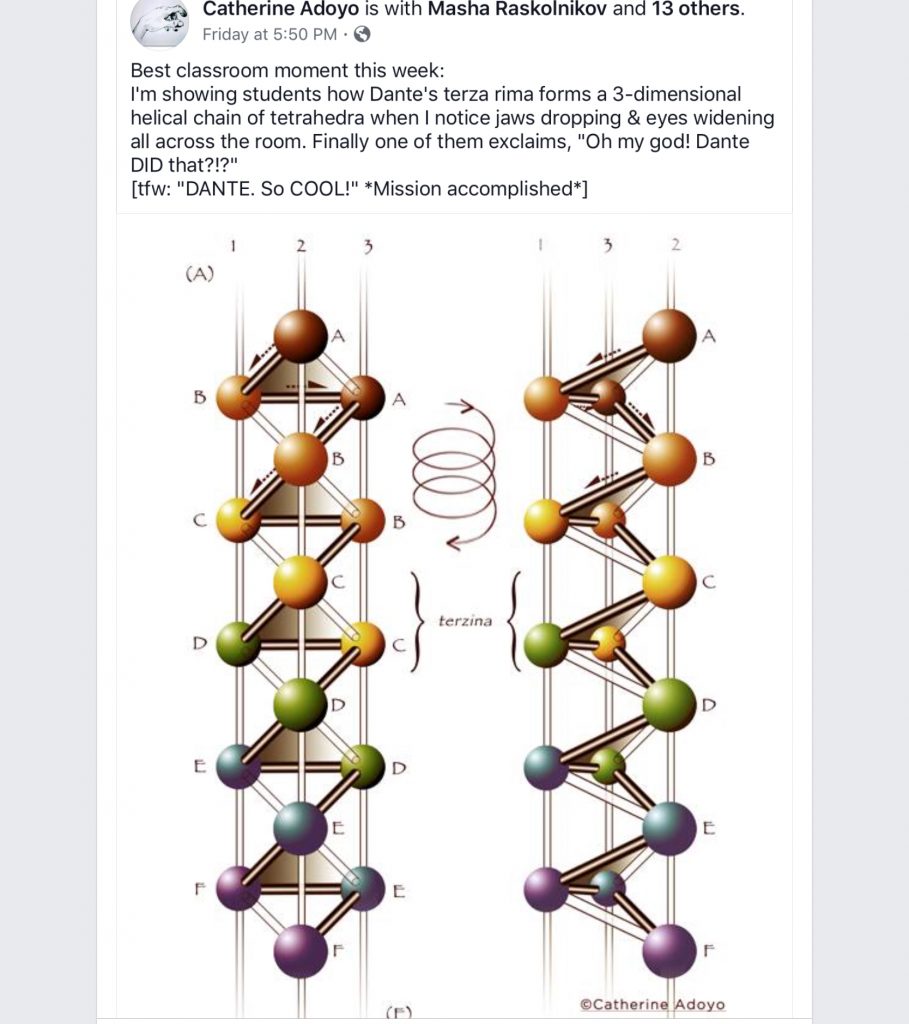
TUESDAY
Start: some answers to questions arising from comments:
- Christine de Pizan’s background, education, sources and resources
- the literary genres of the Category of Women, exemplary collections (inc. for men—ex. Boccaccio De Casibus virorum illustrium—for humans generally, for paths of virtue and towards goodness and where it, in turn, leads to in the afterlife), didactic and specular (and speculative and introspective) writing
- Ex. Hesiod, Boccaccio Decameron & De Mulieribus claris, Chaucer Legend of Good Women,
- feminism and / or / as anti-misogyny: questions about the use and abuse of anachronistic terminology and concepts, and flipping them around: comparative readings, medievalisms (plural), and reading and questioning contemporary concepts and terminology in the light of earlier ideas. See essays in second part of our text, and other work by the same scholars, and Maureen Quilligan, The Allegory of Female Authority: Christine de Pizan’s Cite des Dames (1991)
- another feminist problem: the kinds and range of examples: including traditional roles, the valorisation / valuing of “women’s” work and crafts (ex. textiles)
- bearing in mind that much writing is anonymous, and—especially in the case of religious, devotional compositions—not necessarily obviously gendered by modern conventional norms, or more complicatedly, or not at all: feminised or neutral known male poets, inter- and trans-gender voices, saints and religious (monks, nuns) and mystical marriages with Christ or the Virgin Mary
- some common ground: ideas of access and equity; the idea of parity and of being a peer
- reception and reading: how Christine de Pizan is written (inc. by her), preserved, collected, transmitted: Schoenberg Database of Manuscripts (University of Pennsylvania), 148 MS and counting…
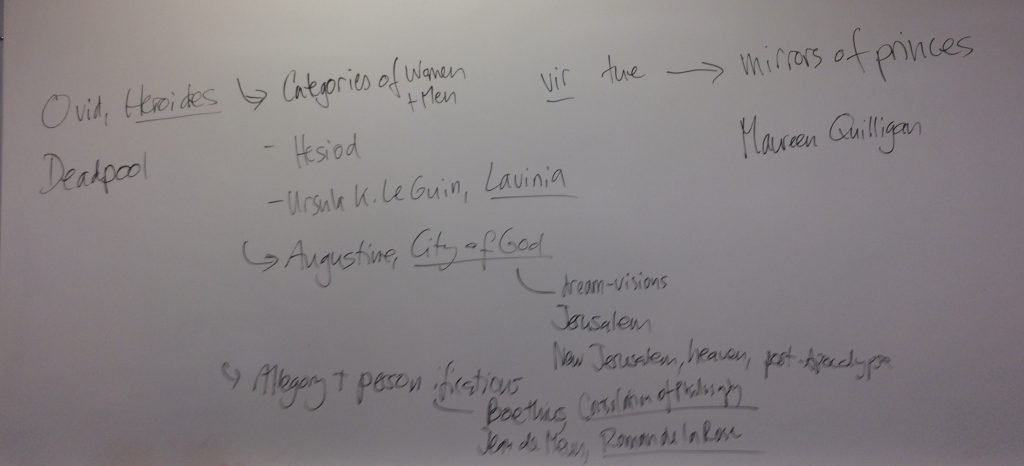
THURSDAY
- Places and spaces: the idea of a “place of mind”
- one particular space: the garden (presentation: Anne)
- the Book of the City of Ladies
- British Library Harley MS 4431
- Introduction: British Library Medieval Manuscripts Blog
- and another shorter introduction, to the Book of the City of Ladies, BL again
- background: a virtual pilgrimage “Pilgrim Libraries: books and reading on the medieval routes to Rome and Jerusalem” research project (dir. Anthony Bale, Birkbeck College, University of London)
- extras (JO’B to bring in books): Christine de Pizan political writings, the Roman de la Rose debate, lyric poetry
